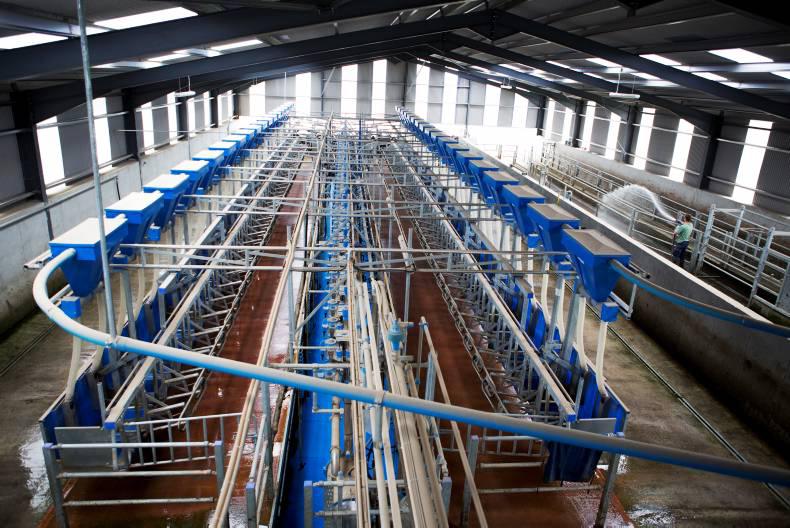The latest global milk market outlook from the EU's Milk Market Observatory reveals some stabilisation in dairy markets.
At world level, milk production increased by some 3.9% in the first quarter of 2016, mainly due to the EU. However, it appears that EU milk production growth has slowed down slightly in some member states, and overall global demand seems to remain relatively healthy despite increasing inventories and lower buying power of oil-producing countries.
EU milk production is still strong (up 6.6% in March) but there was a slowdown in April due to the unusually cold weather, with signs of production slowing down in France, Denmark and the UK in particular. Output growth is forecast to slow even further in the second quarter of 2016.
US production growth was lower than expected in April (up 1.2%). The USDA forecast for 2016 is +1.8%. New Zealand is likely to end up at -2% for the season and Australia at -1 to 2%. World demand remains dynamic, according to the Commission, driven by butter and cheese imports.
EU exports have performed well at low prices, which has stimulated demand and opened up new markets, sectors and customers. This is less so for milk powders, however, as skimmed milk powder (SMP) prices continue to oscillate around intervention level.
On the world market, prices expressed in US$ have decreased for all products from Oceania as well as from the USA (except for SMP). EU prices are broadly stable.
End of super down cycle?
The Commission says that there are early signs of market recovery, be it from a very low base. The still-high milk volumes in Europe and higher US flows than anticipated continue to outpace Oceania constraints.
Further supply side correction remains necessary, but the Commission suggests we may have left the “super down cycle”.
Signs of life in China
There was double-digit growth in China dairy imports in the first quarter of 2016. Chinese import demand decreased for commodities in April, but demand for high-value products has been increasing all along.
The strengthening of the euro against the dollar, however, is a concern for export competitiveness.
In its contribution to the Milk Market Observatory, the European association of dairy trading companies Eucolait also warned that the "market situation has not evolved fundamentally. Further supply-side correction remains necessary".
Read more
‘Dairy volatility is subjective’
Irish dairy needs a forward fix
No milk supply control, Creed tells other EU ministers
The latest global milk market outlook from the EU's Milk Market Observatory reveals some stabilisation in dairy markets.
At world level, milk production increased by some 3.9% in the first quarter of 2016, mainly due to the EU. However, it appears that EU milk production growth has slowed down slightly in some member states, and overall global demand seems to remain relatively healthy despite increasing inventories and lower buying power of oil-producing countries.
EU milk production is still strong (up 6.6% in March) but there was a slowdown in April due to the unusually cold weather, with signs of production slowing down in France, Denmark and the UK in particular. Output growth is forecast to slow even further in the second quarter of 2016.
US production growth was lower than expected in April (up 1.2%). The USDA forecast for 2016 is +1.8%. New Zealand is likely to end up at -2% for the season and Australia at -1 to 2%. World demand remains dynamic, according to the Commission, driven by butter and cheese imports.
EU exports have performed well at low prices, which has stimulated demand and opened up new markets, sectors and customers. This is less so for milk powders, however, as skimmed milk powder (SMP) prices continue to oscillate around intervention level.
On the world market, prices expressed in US$ have decreased for all products from Oceania as well as from the USA (except for SMP). EU prices are broadly stable.
End of super down cycle?
The Commission says that there are early signs of market recovery, be it from a very low base. The still-high milk volumes in Europe and higher US flows than anticipated continue to outpace Oceania constraints.
Further supply side correction remains necessary, but the Commission suggests we may have left the “super down cycle”.
Signs of life in China
There was double-digit growth in China dairy imports in the first quarter of 2016. Chinese import demand decreased for commodities in April, but demand for high-value products has been increasing all along.
The strengthening of the euro against the dollar, however, is a concern for export competitiveness.
In its contribution to the Milk Market Observatory, the European association of dairy trading companies Eucolait also warned that the "market situation has not evolved fundamentally. Further supply-side correction remains necessary".
Read more
‘Dairy volatility is subjective’
Irish dairy needs a forward fix
No milk supply control, Creed tells other EU ministers






 This is a subscriber-only article
This is a subscriber-only article





SHARING OPTIONS: